Last In, First Out LIFO: The Inventory Cost Method Explained

However, the ending inventory value may https://www.bookstime.com/ not reflect the current market value, as it is based on the cost of the oldest inventory. The selection of inventory accounting methods like LIFO can significantly impact financial reporting and tax obligations. The average cost is a third accounting method that calculates inventory cost as the total cost of inventory divided by total units purchased.
Part 2: Your Current Nest Egg
In other words, under the LIFO method, the cost of the most recent lot of materials purchased is charged until the lot is exhausted. Dollar-value LIFO places all goods into pools, measured in terms of total dollar value, and all decreases or increases to those pools are measured in terms of the total dollar value of the pool. In this article, we delve into critical aspects of this accounting approach to offer a clearer perspective on whether the LIFO method aligns with your business needs. Kristin is a Certified Public Accountant with 15 years of experience working with small business owners in all aspects of business building.
Lower Tax Liability
- Try FreshBooks free to start streamlining your LIFO inventory management and grow your small business.
- As such, FIFO is a generally accepted accounting principle in almost all jurisdictions, whereas LIFO accounting is only accepted in some.
- So out of the 14 units sold on January 6, we assign a value of $700 each to five units with the remainder of 9 units valued at the cost of the next most recent batch ($600 each).
- In this article, we break down what the LIFO method entails, how it works, and its use cases.
- A LIFO periodic system finds the value of ending inventory by matching the cost of the earliest purchase of the accounting period to the units of ending inventory.
- Additionally, it helps companies better manage their stock levels and ensure they have the most current products available.
If you’re new to accountancy, calculating the value of ending inventory using the LIFO method can be confusing because it often contradicts the order in which inventory is usually issued. FIFO is the more straightforward method to use, and most businesses stick with the FIFO method. Accounting professionals have discouraged the use of the word "reserve," encouraging accountants to use other terms like "revaluation to LIFO," "excess of FIFO over LIFO cost," or "LIFO allowance." You also must provide detailed information on the costing method or methods you'll be using with LIFO (the specific goods method, dollar-value method, or another approved method).
- FIFO, or First In, First Out, is an inventory valuation method that assumes that inventory bought first is disposed of first.
- Therefore the first batch of inventory that they order is also the first to be disposed of, leading to a steady inventory turnover.
- When inventory is acquired and when it’s sold have different impacts on inventory value.
- Learn more about what LIFO is and its impact on net income to decide if LIFO valuation is right for you.
- However, the higher net income means the company would have a higher tax liability.
- They sell 200 vacuums in the first quarter, generating a revenue of $80,000.
Which financial ratios does LIFO ending inventory calculation affect?
Assuming that prices are rising, this means that inventory levels are going to be highest as the most recent goods (often the most expensive) are being kept in inventory. This also means that the earliest goods (often the least expensive) are reported under the cost of goods sold. Because the expenses are usually lower under the FIFO method, net income is higher, resulting in a potentially higher tax liability. Under the LIFO method, assuming a period of rising prices, the most expensive items are sold. This means the value of inventory is minimized and the value of cost of goods sold is increased.
Under a perpetual inventory system, inventory must be calculated each time a sale is completed. The method of looking at the last units purchased is still the same, but under the perpetual system, we can only consider the units that are on hand on the date of the sale. If we apply the periodic method, we will not concern ourselves with when purchases and sales occur during the period. We will simply assume that the earliest units acquired by the shop are still in inventory. The earliest unit is the single unit in the opening inventory and therefore the remaining two units will be assumed to be from the current month's purchase.
How does the LIFO method affect taxable profits?
The LIFO method assumes that Brad is selling off his most recent inventory first. Since customers expect new novels to be circulated onto Brad’s store shelves regularly, then it is likely that Brad has been doing exactly that. In fact, the very oldest inventory of books may stay in inventory forever and never be circulated. This is a common problem with the LIFO method once a business starts using it, in that the older inventory never gets onto shelves and sold. Depending on the business, the older products may eventually become outdated or obsolete. The average cost method produces results that fall somewhere between FIFO and LIFO.
What’s the difference between FIFO and LIFO?

The Last-In, First-Out (LIFO) method, like any accounting strategy, comes with its own set of advantages and disadvantages that businesses need to consider carefully. Deciding whether to use the LIFO method requires a careful evaluation of these factors, considering both the immediate financial implications and the long-term strategic impact on the business. Under perpetual we had some units left over from January 22nd, which we did not have under periodic. The last units in were from January 26th, so we use those first, but we still need an additional 30.
- A member of the CPA Association of BC, she also holds a Master’s Degree in Business Administration from Simon Fraser University.
- FIFO states that if the bakery sold 200 loaves on Wednesday, the COGS (on the income statement) is $1 per loaf because that was the cost of each of the first loaves in inventory.
- This means that all units that were sold that day came from the previous day’s inventory balance.
- This is because the latest and, in this case, the lowest prices are allocated to the cost of goods sold.
- However, in the real world, prices tend to rise over the long term, which means that the choice of accounting method can affect the inventory valuation and profitability for the period.
Example of LIFO vs. FIFO

Once March rolls around, it purchases 25 more flowering plants for $30 each and 125 more rose bushes for $20 each. It sells 50 exotic plants and 25 rose bushes during the first quarter of the year for a total of 75 items. LIFO is unearned revenue only allowed in the USA, whereas, in the world, companies use FIFO. In the USA, companies prefer to use LIFO because it can help them reduce their taxable income. Furthermore, when USA companies have operations outside their country of origin, they present a section where the overseas inventory registered by FIFO is modified to LIFO.

Does IFRS Permit LIFO?
One potential downside to LIFO is that it can lead to higher inventory costs as old items must be replaced frequently. Additionally, businesses may not be able to take advantage of bulk discounts since only a few items are purchased at a time. According to a physical count, 1,300 units were found in inventory on December 31, 2016. lifo formula The company uses a periodic inventory system to account for sales and purchases of inventory. Consider Tina’s stationary business, which faces rising costs for manufacturing supplies.

